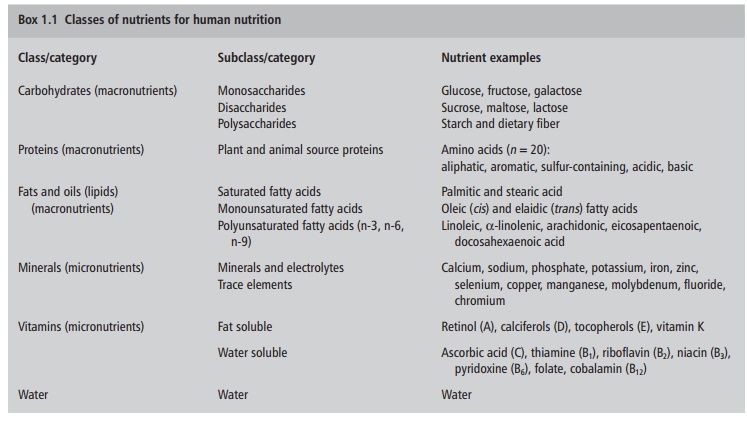Chapter: Introduction to Human Nutrition: A Global Perspective on Food and Nutrition
Global malnutrition
Global malnutrition
It is a major tragedy that millions
of people currently live with hunger, and fear starvation. This is despite the
fact that food security or “access for all at all times, to a sustainable
supply of nutritionally adequate and safe food for normal physical and mental
develop-ment and healthy, productive lives” is a basic human right embedded in
the constitution of most develop-ing countries. It is also despite the fact
that sufficient food is produced on a global level. Food
Box 1.2
Food insecurity: when people live
with hunger, and fear starvation. Food
security: access for
all, at all
times, to a sustainable,
affordable supply of nutritionally adequate and safe food for normal physical
and mental development and healthy, productive lives.

insecurity is an obstacle to human rights, quality of life, and human dignity. It was estimated that, during the last decade of the twentieth century, 826 million people were undernourished: 792 million in develop-ing countries and 34 million in developed countries. In developing countries, more than 199 million chil-dren under the age of 5 years suffer from acute or chronic protein and energy deficiencies. An estimated 3.5–5 billion people are iron deficient, 2.2 billion iodine deficient, and 140–250 million vitamin A defi-cient. This has led to several global initiatives and commitments, spearheaded by a number of United Nations organizations, to reduce global undernutri-tion, food insecurity, hunger, starvation, and micro-nutrient deficiencies. Some progress has been made in reducing these numbers, but the problems are far from solved. Some of the initiatives are:
● the 1990 United Nations Children’s (Emergency) Fund (UNICEF)-supported World Summit for Children, with a call to reduce severe and moderate malnutrition among children under 5 years of age by half the 1990 rate by the year 2000, including goals for the elimination of micronutrient malnutrition
● the 1992 World Health Organization/Food and Agriculture Organization
(WHO/FAO) Interna-tional Conference on Nutrition that reinforced earlier goals
and extended them to the elimination of death from famine
● the 1996 FAO-supported World Food Summit during which 186 heads
of state and governments pledged their political will and commitment to a plan
of action to reduce the number of undernour-ished people to half their 1996
number by 2015
● the establishment in 1997 of the Food Insecurity and
Vulnerability Information and Mapping System (FIVIMS) and their Interagency
Working Group (IAWG), which consists of 26 international organi-zations and
agencies with a shared commitment to reduce food insecurity and vulnerability
and its multidimensional causes rooted in poverty; infor-mation about these
initiatives can be accessed at: http://www.fao.org/
Millennium Development Goals: the United Nations articulated
eight goals, ranging from halving extreme poverty and hunger, halting the
spread of the human immunodeficiency virus (HIV)/acquired immuno-deficiency
syndrome (AIDS) and providing univer-sal primary education, to be reached by
the target date of 2015; the blueprint of these goals was agreed to by all the
world’s countries and leading develop-ment institutions.
A 2001 report from the FAO indicated that in 1997–1999 there were 815 million undernourished people in the world, of whom 777 million were in developing countries, 27 million in transitional coun-tries and 11 million in the industrialized countries. The annual decrease in undernourished people from the 1990–1992 period was 6 million. To reach the World Food Summit’s goal of halving the number of undernourished in developing countries by 2015, it is estimated that the annual decrease required is 22 million.
Clearly, this is a huge challenge for food and nutri-tion scientists
and practitioners. It would need a holistic approach and understanding of the
complex, interacting factors that contribute to malnutrition on different
levels. These include immediate, intermedi-ate, underlying, and basic causes:
●individual level or immediate causes: food and nutrient intake,
physical activity, health status, social structures, care, taboos, growth,
personal choice
●household level or intermediate causes: family size and
composition, gender equity, rules of distribu-tion of food within the
household, income, avail-ability of food, access to food
●national level or underlying causes: health, educa-tion,
sanitation, agriculture and food security, war, political instability,
urbanization, population growth, distribution and conflicts, war, natural
disasters, decreased resources
●international level or basic causes: social, economic and
political structures, trade agreements, popula-tion size, population growth
distribution, environ-mental degradation.
To address these causes of undernutrition food-insecure and
hungry communities and individuals must be empowered to be their own agents of
food security and livelihood development. Complicating the task of fighting
food insecurity and hunger are natural disasters such as droughts, floods, cyclones
and extreme temperatures, ongoing wars and regional conflicts, as well as the
devastating impact of HIV and AIDS, especially in sub-Saharan Africa.
In many developing countries, indigenous people have changed
their diets and physical activity patterns to those followed in industrialized
countries. Supple-mentary feeding programs in these countries have often been
associated with increasing trends towards obesity, insulin resistance, and the
emergence of chronic diseases of lifestyle in some segments of these
populations, while other segments are still undernourished.
The coexistence of undernutrition and overnutrition, leading to
a double burden of infectious and chronic, noncommunicable diseases, and the
multi-factorial causes of malnutrition, call for innovative approaches to
tackle both undernutrition and overnutrition in integrated nutrition and
health-promoting programs, focusing on optimal nutrition for all.
Related Topics